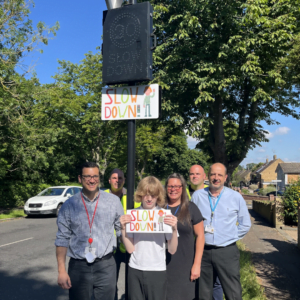Following the roll out of its ground-breaking Plus+ traffic control solution to sites across the UK, Yunex Traffic has launched a ‘temporary to permanent’ solution for the system. This allows the permanent Plus+ equipment to be used during the temporary phases of site construction, providing a cost-effective and less disruptive alternative to separate, temporary signals.
Difficulties with traditional solutions
The installation of a signalised traffic intersection requires civil engineering works, which in turn require lane closures and the installation of temporary signals. These temporary schemes can add significant cost and complexity to signal installations, extend project times and of course cause disruption to road users and pedestrians, with the resulting congestion having an impact on air quality.
Furthermore, temporary signals can be extremely challenging to operate within an existing traffic network, for example whilst under the control of UTC (Urban Traffic Control), if network performance is to be maintained throughout the project.
To minimise this disruption and provide a cost-effective alternative to increasingly complex temporary signalling, Yunex Traffic has developed a new approach for the deployment of traffic signals during site installation.
The Plus+ solution
The Plus+ traffic control system offers a new approach to traffic signal control, having been developed to deliver on-street resilience and reliability, as well as fast and cost-effective installation for both new schemes and major refurbishment projects.
With Plus+, intelligence and infrastructure are distributed around junctions, providing a range of benefits to installation and traffic management teams. These include a significant reduction in the number of cables required, with savings accruing from a much simplified and faster installation process and reduced material costs.
Environmental benefits are also significant, given the reduction in materials, particularly copper, and in travel time reduction. Across just five recent Plus+ installations, compared to conventional schemes, using the system has led to a saving of nearly one tonne of copper cabling, the release of over three tonnes of embedded CO2 and a saving of more than 200 installation hours. In summary, that means less copper, less disruption and less environmental impact.
To reduce project complexity and risk, and to save time and cost, Plus+ uses a fully compliant TR2500 traffic control system, meaning there is no loss of control connectivity, so even in the construction stage, the scheme can run under UTC, SCOOT and MOVA control with full integration of pedestrian and cycle movements. Consequently full, uninterrupted coordination can continue right through the project, from construction to permanent deployment, resulting in less disruption, less congestion, and less road user frustration.
A number of Plus+ installations have already used the final system equipment in this way, such that is acts as temporary traffic signals during the construction phase, with the Plus+ controller installed in its permanent location and temporary poles with the Plus+ traffic signal equipment installed into blocks.
How does it work?
Because Plus+ uses a small number of 2-pair feeder cables to support an entire junction, temporary phases can easily be accommodated as part of the installation of the final permanent solution, with cables often using existing ducting around a junction. This completely removes the need for overhead cables or wireless battery powered signals.
Once the temporary Plus+ system is commissioned, the existing redundant equipment can be removed. To minimise downtime, as civils works are completed and new poles installed, the Plus+ signal equipment in temporary locations can simply be transferred to their new permanent location with the Plus+ temporary solution remaining live in operation.
The new Plus+ cable used during the temporary cabling, can often then be used as part of the permanent installation to again reduce both waste and cost.
To help maximise the benefits of Plus+ in this way, Yunex Traffic will design and manage the delivery of permanent schemes from initial concept through to completion, using the unique architecture of Plus+ to eliminate entirely the need for temporary traffic management equipment and services.
The launch of Plus+ represented a step change in traffic controller technology, providing a cost-effective, sustainable and resilient system for traffic intersections. The introduction of the temporary to permanent solution brings yet more advantages for local authorities, providing further cost benefits as well as minimising disruption and congestion for road users.





















